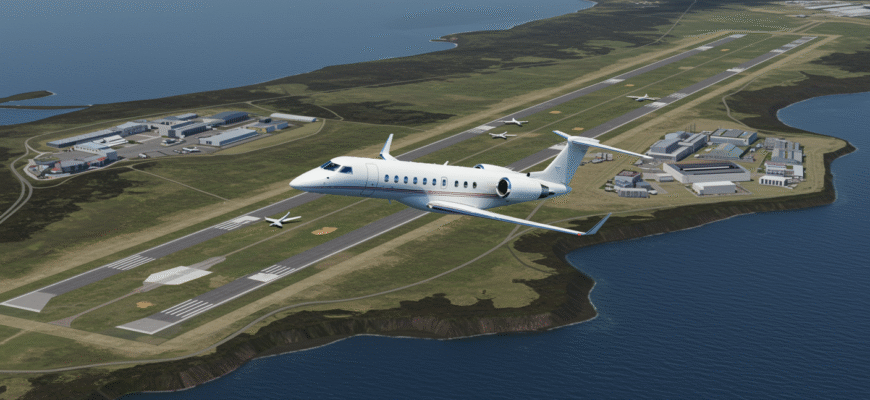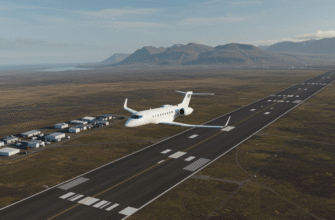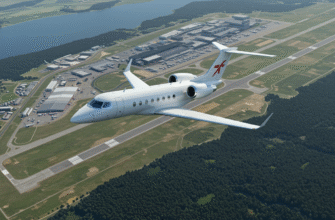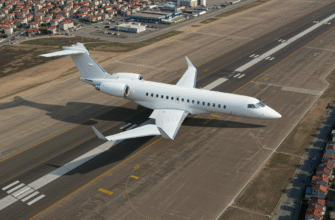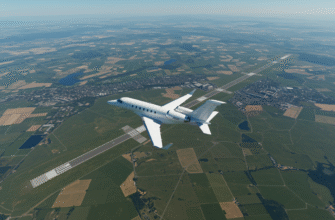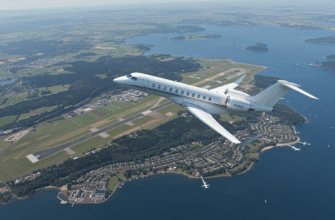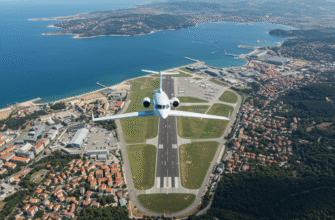Flying into A Coruña should be simple. One runway. Modest terminal. Just a few airlines. But it’s not. What looks like a straightforward regional airport turns out to be something stranger, stormier, and honestly, way more memorable. A Coruña Airport (LCG) sits just inland from Galicia’s rocky Atlantic coast—close enough to snag postcard-worthy sea views, but also cursed by unpredictable fog and one of the gutsiest landings in Spain. Commercial aviation here was almost an afterthought; the airport first served military needs in the 1930s, and decades later, it carries that same low-profile swagger into the civil world.
LCG often gets overshadowed by its flashier sibling 45 km down the highway: Santiago de Compostela Airport. But don’t be fooled. While SCQ racks up more traffic, LCG brings more grit. It doesn’t try to be perfect. It just tries to work, even if you’re touching down sideways through coastal mist. There’s a reason Galicians have jokes about needing divine intervention to land here. And when you finally do, you feel it in your bones—like sticking the landing was never guaranteed but somehow, it happened anyway.
Lcg’s Identity Crisis: Regional Airport, Big Energy
If it feels like LCG has main character energy, that’s because it kind of does. Built on the leftover bones of a Spanish Civil War military strip, this airport wasn’t supposed to dominate in elegance, but it was supposed to work—rain, fog, or surprise Atlantic squalls. Despite sitting about 7 kilometers from A Coruña’s city center, most outside the region assume Santiago covers everything in northwest Spain. In some ways, that mistake suits LCG. It stays low-key and lets its scars show.
What makes it so compelling is how much effort goes unnoticed. After its makeover in the early 2000s, the sleek new terminal stood half-empty for a while, like a prom dress worn in a dive bar. Meanwhile, passenger numbers quietly went from “barely anyone” to “just enough,” hitting around 1.5 million pre-pandemic. The airport might not flex stats like Madrid or Barcelona, but it knows what it’s about. It’s personal. Real. Foggy as hell. But real.
Emotion, Fog, And Folklore In The Wind
Nobody flies into A Coruña expecting clear skies. That moist Galician air has a schedule of its own—and it rarely aligns with takeoffs. There are days when fog rolls in fast enough to swallow a runway before the tower even sees it coming. And when that fog settles, it’s not just weather. Locals say it feels like the wind carries stories. Old sea myths. Lost time. Missed connections.
You’ll hear passengers clap after touch-down, not out of habit, but out of relief. Some even cross themselves. Jokes circle around bars about flight diversions being a “local rite of passage.” Having to land in Santiago instead? Happens a lot, and nobody’s surprised. Even in the best light, flying into LCG feels like threading a plane through a moving cloud wall—and making it to the other side is borderline poetic.
The Fog Factor: Why Pilots Sweat A Coruña
Work in aviation long enough and you’ll hear stories about Alvedro. They all start the same—some clear skies, a simple hop over Spain’s spine—and then fog. Insidious, low-layered, and impossible to ignore. LCG’s weather isn’t a daily inconvenience. It’s part of its identity. Pilots prepping for approach don’t just monitor instruments. They plan contingencies.
It’s that combination of low-lying marine clouds, surprise gusts, and shifting visibilities that makes flying here feel like threading a needle mid-air. It’s not dangerous in the reckless sense. But it’s damn demanding.
Steep Approach And Runway Specs That Make It Interesting
Runway 03/21 is about 2,340 meters—long enough on paper, but shorter than it feels when descending steep through soup-thick clouds. A Coruña’s topography forces pilots into a curved final that leaves minimal room for hesitation. It’s a runway that’ll make you sit up in your seat if you’re flying; you can feel the plane work harder to align just right.
Pilots with stories from LCG talk about last-minute corrections, unpredictable updrafts, and how even the instruments feel “less obedient” when the fog rolls in thick. That’s why standard procedure isn’t always enough. Veterans have learned that muscle memory matters, and no two landings ever feel the same. It’s real-time improvisation, every time.
For The Aviation-Curious: Navigation Details That Matter
| System | Details |
|---|---|
| ILS (Instrument Landing System) | Supports lower-visibility approaches |
| VOR (VHF Omnidirectional Range) | La Coruña VOR/DME (LRA 115.1 MHz) |
| RNAV | Integrated for modern navigation and precision |
| Tower Frequencies | 118.3 MHz (Tower), 121.7 MHz (Ground), 120.2 MHz (Approach – via Santiago) |
It’s not just about what systems exist—it’s about when they’re useful. At LCG, even the best instruments can’t always beat the fog, and sometimes, it all comes down to pilot instinct. Layer that with a terminal shaped to handle more than reality delivers, and you get an airport that feels like it’s always training for more than it gets credit for.
Where Lcg Falls In The National Air Traffic Lineup
In Spanish aviation circles, LCG often comes up third behind Santiago and Vigo—not a knock, but a reminder of where it stands in sheer numbers. SCT (Santiago) serves more flights, covers international traffic, and sits closer to religious tourism hot spots. But LCG has its weird charm. While it trails in volume, it’s punching above its weight in attitude.
On paper, it’s a middle-of-the-pack regional airport. In practice? It’s a character. The kind of place frequent fliers talk about like an old friend—tempramental, gritty, and ridiculously beautiful on a sunny day.
Airlines And Routes That Keep It Functional
You won’t find long-hauls flying out of A Coruña, but it holds its own across key domestic circuits. Travelers lean on dependable carriers like Iberia and Vueling for Madrid and Barcelona routes. Air Europa dips in for seasonal traffic, especially toward the islands. Occasionally, Ryanair makes an appearance like an ex that just can’t stay away long.
- Iberia for steady Madrid connections
- Vueling for Barcelona, Valencia, plus the Balearics
- Air Europa for Palma and flexible summer spots
- Ryanair—intermittent and often unpredictable
LCG’s not built for big volume, but it handles what it does well enough. Timing isn’t everything here—but persistence is.
Local Travel Hacks For Dodging Delays
Flying from LCG takes a little strategy—especially if you’re local and not in the mood to spend half your day watching clouds thicken.
Best practices most Galicians swear by:
- Skip early mornings in winter: That’s when fog is thickest and delays stack up.
- Afternoons tend to be clearer, weather permitting.
- Always have backup plans in case your flight diverts to Santiago or Vigo—driver apps or shared rides help dodge the rebooking chaos.
Mostly, people here work with what they’ve got. And what they’ve got is an airport full of character, prone to chaos, yet somehow loved because of it—not in spite of it.
Terminal Glow-Up, Galician Style
The new terminal at A Coruña Airport (LCG) didn’t just upgrade the glass — it cracked open a whole new feeling. What once gave off militarized bunker energy now feels like a low-key, light-filled lounge dropped above the Atlantic. Long gone are the dim, concrete tunnels travelers used to shuffle through. In their place? Sharp, transparent corridors that mirror the wandering coastline outside. It’s all very “Scandinavian design meets Galician fog.” The huge windows soak up what light the sky offers, even through the soft drizzle that drapes this region nine months a year.
Getting through security? Surprisingly calm. The check-in desks may not always hum with efficiency, but there’s a chill that sets in — like everyone understands they’re flying from the edge of the world. Delayed? Sit upstairs with a coffee at Cafetería Miranda. The view? Full runway, rolling countryside, sometimes seagulls doing their version of a fly-by. For once, even a three-hour delay doesn’t feel wasted. Time moves differently here.
It’s not screaming Galician identity, but it’s humming it. Signs come in Galician, Spanish, and English — a triad that says more about pride and accessibility than any banner could. Art installations lean local: gentle sea themes, vintage aviation photos, muted blues and silvers. The signage? Almost too low-key. It’s that easygoing pace that says: “You’re not lost, you’re just not there yet.”
Memory-Making Moments at LCG
Planes don’t always land here. And when they do, it’s worth a post. Whether it’s TikTok confessionals or blurry iPhone Stories captioned with “Made it out of Alvedro,” people document survival. Everyone’s got a fog story. One minute you’re preparing to land; next, you’re in Vigo. Or Santiago. Or on an unexpected car ride back along stormy coastal roads with a rental you’ve never driven before.
What turns this from a simple airport to a weirdly emotional place isn’t just the turbulence drama — it’s the silence that hits when a flight leaves. The buzz falls out of the walls and you’re left watching weather roll in like some living theater. Window seats aren’t aesthetic here — they’re necessary. Catching clouds folding over mountaintops feels almost cinematic. Airports are usually noisy, transactional spaces, but LCG? It lingers.
Runway Facts for the Data-Hungry
- ICAO code: LCG
- Elevation: 326 feet
- Runway: 03/21, 6,365-ft length
- Visibility headaches: Known for fog that keeps pilots on their toes — and simulation exercises intense
